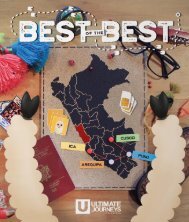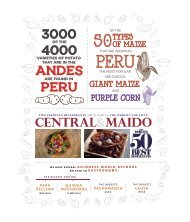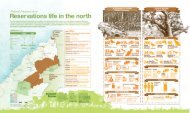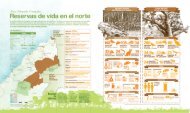UJ #14 - Qhapac Ñan
Create successful ePaper yourself
Turn your PDF publications into a flip-book with our unique Google optimized e-Paper software.
Qhapaq <strong>Ñan</strong> Project’s National Office<br />
The visits that include<br />
performances portray the<br />
way of living of the ancient<br />
residents of the place.<br />
Nevertheless, the population did not turn<br />
their back on their legacy before the arrival of<br />
the specialists. Since the 1960s, the residents<br />
committed to look after the archaeological site<br />
and protect it from latent dangers in the area such<br />
as land invasions. “Our vision is to work hand in<br />
hand with the community so that they can take<br />
over the entire project and improve their quality<br />
of life”, highlighted Mackie.<br />
Their eagerness for creating a new experience for<br />
the tourists who arrive at Huaycan de Cieneguilla<br />
generated groups of cultural advisors formed by<br />
the residents, who are trained to tell the story of<br />
the place from a local perspective. These teams<br />
also lead the night tours, supplementing history<br />
and archaeology with traditional legends and<br />
tales; and the interpretive visits in Quechua with<br />
characters dressed as the ancient Inca residents.<br />
Last year, Huaycan de Cieneguilla received about<br />
8,500 visitors, and expects to exceed this figure<br />
in 2017, thanks to the further advertising on the<br />
Qhapaq <strong>Ñan</strong>. The ties with local entrepreneurs<br />
and businesses from the area help establish the<br />
archaeological zone within the touristic circuit of<br />
the district, renowned for its gastronomic corridor<br />
and ecological value.<br />
54

















